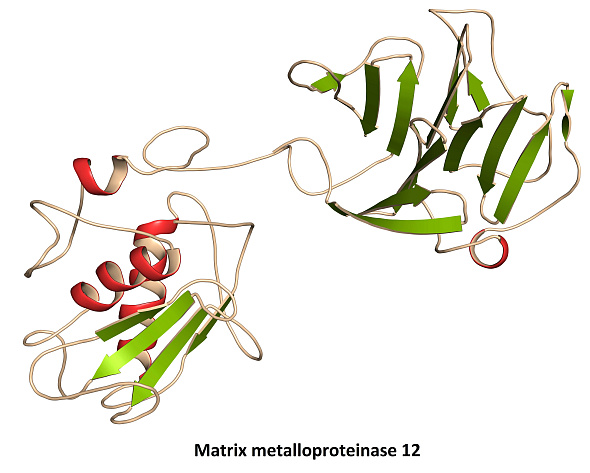Chelators targeting matrix metalloproteinases library
ChemDiv’s library of small molecule chelators targeting matrix metalloproteinases contains 9,300 compounds.
Matrix metalloproteinases (MMPs) are a family of zinc-dependent endopeptidases capable of degrading almost every component of the extracellular matrix (ECM). The typical domain structure of MMPs includes four domains, with the catalytic domain being crucial for enzyme activity. This domain contains the highly conserved Zn2+ binding region.
In most organs, the ECM primarily consists of collagens and various proteins that constitute the basement membrane. Tumor cells often overexpress proteases or induce their expression in adjacent stromal cells, facilitating the degradation of the basement membrane and enabling invasion into surrounding tissues. This proteolytic activity is also essential for subsequent metastasis [1].
Given the significant role of MMPs in cancer, numerous matrix metalloproteinase inhibitors (MMPIs) have been investigated. Early MMPIs were designed to bind within the catalytic domain of these proteases. The first therapeutics in this class were peptidomimetics, or compounds modeled on the bases of amino acid sequences of MMPs' endogenous ligands. Those compounds act by chelating the catalytic zinc ion, thereby inactivating the protease. Small molecule inhibitors can also target MMPs and their specificity is often conferred by substituents such an isopropyl group placed next to the Zn2+-chelating hydroxamic acid moiety, which binds in the S10 subsite [2].
Another class of MMPIs includes chemically modified tetracyclines (CMTs), which may inhibit MMPs either by binding to essential metal ions or by regulating MMP transcription [1].
The library of small molecule MMPIs is a valuable tool in drug discovery, offering a diverse array of compounds specifically designed to target and inhibit MMPs, which are critical in various pathological processes, particularly cancer progression and metastasis. By providing a wide range of MMPIs, including non-peptidic small molecules, this library facilitates the exploration and identification of potential therapeutic agents that can effectively disrupt the proteolytic activity of MMPs. The structural diversity within the library allows for the screening of compounds with varying binding affinities and specificities to different MMP subtypes, thus enabling the development of more targeted and potentially less toxic cancer therapies. Additionally, the library serves as a resource for studying the broader roles of MMPs in other diseases such as cardiovascular and inflammatory disorders, thereby expanding the scope of MMP-related drug development beyond oncology.
References:
[1] R. Roy, J. Yang, and M. A. Moses, “Matrix metalloproteinases as novel biomarkers and potential therapeutic targets in human cancer,” J. Clin. Oncol., vol. 27, no. 31, pp. 5287–5297, 2009, doi: 10.1200/JCO.2009.23.5556.
[2] J. Cathcart, A. Pulkoski-Gross, and J. Cao, “Targeting matrix metalloproteinases in cancer: Bringing new life to old ideas,” Genes and Diseases, vol. 2, no. 1. Chongqing Medical University, pp. 26–34, Mar. 01, 2015, doi: 10.1016/j.gendis.2014.12.002.
